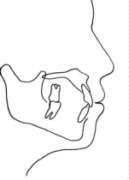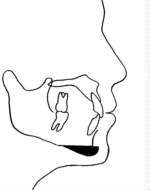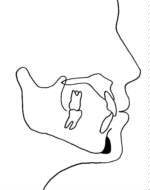My friend just had her chin made "stronger" by an oral surgeon. She said it was done right there in the office and she looks great but what did they do and how long will it last?
There are multiple ways to change the appearance of a person's chin. In some cases a perceived weak" or "receeding" chin is not the problem at all but in fact, the chin is in the right place and it is the remainder of the facial skeleton which is inappropriately positioned. Certainly if there is a major skeletal facial discrepancy, that should be corrected first. We will talk about orthognathic surgery (the process by which such discrepancies are corrected) in a future column.We will talk here about the different ways that the appearance of the chin alone can be surgically altered.

The chin point can be augmented with materials from the patient's own body (autografting) or with materials from outside the body (allografting) and each has it's
own advantages and disadvantages.
In autograft procedures, the surgeon will section the chin from the remainder of the lower jaw, move it forward and reattach it with the aid of plates, wires and/or screws. All of this is done from
an incision inside the mouth so that no scars are visible when you look at the patient. The major benefit is the knowlege that the tissue is 100% biocompatible (because it is the patient's OWN chin simply moved forward). For every 5 mm
(1/5 th inch) the bony chin is moved forward, the soft tissue chin (what you see) will move forward about 4.5 mm (eg. just a little bit less). The results tend to be quite stable though some amount of relapse is not terribly unusual. The
larger the original move, the larger the relapse is likely to be.

In allograft procedures, the same or a smaller incision is used inside the mouth and a prosthesis is placed in front of the bony chin to give the same effect.
You should know that some surgeons use an incision under the chin to do this but this leaves a visible scar, however small, and most of the time, oral maxillofacial surgeons will prefer to hide the scar in the mouth unless there are other
procedures being done at the same time such as liposuction under the jaw and neck.

There are many different materials which have been used over the course of time for augmenting the chin and there have also been problems with reaction to the augmentation material, resorption of the augmentation material or resorption of the chin bone itself (as often happens with silicone implants). Today, one of the nicest options for many patients is the use of a relatively new biocompatible compound. We say it is relatively new because it's major components have both been used in orthopedic surgery for years but only recently have these materials been made available in the form of combined biocompatible implants for facial augmentation. In fact, cheek, chin, mandibular angle (angle of the jaw) and paranasal implants are all available as well as custom created implants fashioned from three dimensional CT scans of the facial skeleton. With the use of this newer material, this procedure too tends to be reasonably stable. The same can not be said for many previous chin implant procedures.


Copyright Kim E. Goldman, D.M.D. 1995, 1996, 1997, 1998, 1999, 2000, 2001, 2002, 2003
Visitors since counter was last reset!